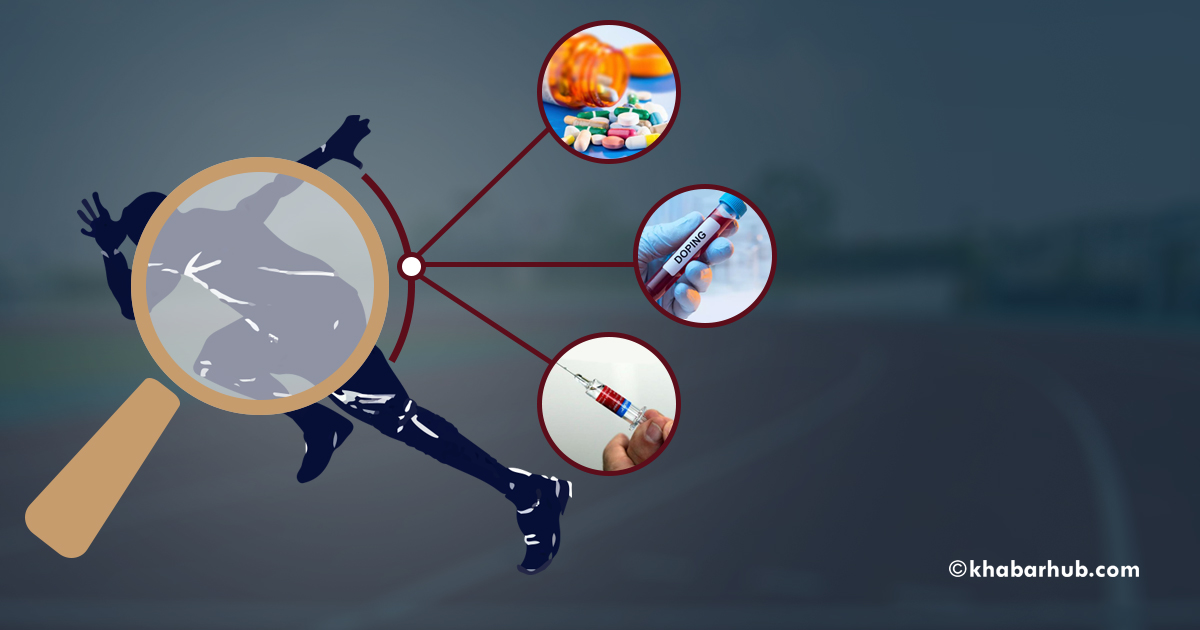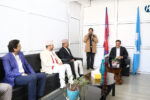KATHMANDU: Doping, the use of banned athletic performance-enhancing drugs by the competitors, a chronic problem in world sports, has warmed Nepali sports lately.
As South Asian Games (SAG) is adopting the doping test in its 13th edition the sports enthusiasts believe it to be a milestone in ensuring fairness, quality and sportsmanship in the regional tournament.
Denis Cheryshev, the star player of the host of FIFA World Cup Football 2018, is also facing the doping allegations and an anti-doping violation test is underway. Sun Yung, Swimming tycoon is under investigation against his involvement in doping violation.
There are various issues preventing an athlete from winning the ‘fair game’. Here is the list of few players with such history:
Case 1
Christianza Durashek, a Croatian cyclist has failed the doping test on Nov. 13, and Union Cycliste Internationale (UCI) has imposed a 4-year ban on him. Durasek had been a professional rider in UAE’s Cycling Team Emirates.
He was suspected to have been involved in doping when he was in the German-Austria region while on his tour to California in 2019. He is found involved in ‘blood doping’.
Case 2
October 9, 2019, was the day when two more cyclists were found guilty of doping. Kristijan Koren and Boret Bozek were found guilty after 7 years of allegations. Koren was found involved in doping while playing on behalf of Bahrain Merida in 2011 and 2012 AD. After the allegation was proved he has been banned from taking part in any competition for 2 years.
Likewise, Bozek, the Sports Director of Koren’s Club is also found guilty in a similar charge. World Anti-Doping Agency (WADA) has issued a ban on both of them.
Case 3
Denys Cheryshev, the star football player from the host country of FIFA World Cup, 2018 has also the doping accusations against him. His incredible performance in the team had drawn everybody’s attention resulting in the Anti-Doping Agency’s probe on him. Although the investigation started in September 2019, the charge is not proved yet.
Anti-doping rules violation in Nepal
Case 1
The first person to be suspected of doping was Sanu Gurung, a bodybuilder. He was charged with ‘Anti-doping-violation’ in 1997-98. The case took a long time until he was banned in sports in 2008 AD.
Case 2
Rajendra Bhandari, a long-distance runner, was another person to get alleged in doping. He was found doping in SAG 2006, held in Sri Lanka.
After getting anti-doping ‘positive’ in the test two gold medals he had bagged before were stripped off from him. Dr. Saroj Krishna Shrestha, the doping physician, affirms finding doping in Rajendra, though how did he get it and who else was involved in such foul deed is still undisclosed.
When the ban-period was over, he came back in the 11th SAG game and bagged a gold medal again. Though alleged of doping this time too, no anti-doping violation was found in him this time.
Case 3
Laxman Tamang, a boxer, was alleged of doping in 2014. Once he got anti-doping- violation ‘positive’ he had to face 5 years ban. Now he has come back to sports.

Listed above are few names with doping ‘positive’ results. In other words, they are the players with the anti-doping violation record. Dr. Saroj Krishna Yadav points out that despite the declining doping instances in the world, Asia and esp. South Asia has an increasing trend.
Dr. Shrestha who has spent a long time in the research and study of doping in Nepal thinks lack of awareness and ignorance about doping as the main causes behind such a trend. According to him, the anti-doping violation is in increasing trend in countries like Nepal, India, Bangladesh and Bhutan.
Dr. Shrestha says, “Doping test can be conducted at any time in any player and provided they are found positive, the guilty ones can be convicted even after 8-10 years.”
He cited the example of the action taken against Bahrain’s Cyclist Christian Koren and Sports Director Boret Bozek who were alleged in 2011 and 2012 respectively and were banned in October 2019.
With the speculation about the prospective anti-doping-violation involvement in the forthcoming 13th SAG, Nepal as the organizer has started the preparation against it.
“Doping is found in international competitions and as SAG is also an international event, there is the chance of doping violation both by the national and international players competing in it,” says Niranjan Rajbansi, a senior sports journalist.
“International Olympic Committee has also made a remarkable investment to minimize the instances of doping, coming days will show the precautions on our players and trainers”, adds Rajbansi.
WADA, an IOC attempt to prevent ‘anti-doping’ violation
To prevent the instances of anti-doping-violation, International Olympic Committee (IOC) has established the ‘World Anti-Doping Agency’ in Nepal.
With its 33 ‘medical test lab’ in different parts of the world, IOC has been striving to prevent the cases of anti-doping-violation throughout the world. These medical test labs test the blood and urine samples of alleged players.
WADA’s unit has been conducting doping in most of the international competitions. This has made a significant contribution to the frequency of anti-doping violations.
The WADA lab of South Asia is in India. WADA publishes the prohibited list on its official website which is updated regularly. WADA remarks the list as “a cornerstone of the World Anti-Doping Code and a key component of harmonization”.
WADA has been conducting the test under Olympic and Non-Olympic categories. A study report with the cases from 2008-2017, published by WADA in 2017 revealed the increasing trend of anti-violation in the world.
Dr. Shrestha thinks the anti-doping violation fatal to the name-fame and career of the players and reiterates the need to minimize such cases through awareness.
Doping in SAG
Doping test is conducted in Nepal every year though the violation ‘positive’ results also don’t draw much attention as it should have got. Dr. Shrestha shares the organizer’s plan to conduct doping in forthcoming SAG more effectively.
“We have been conducting doping tests every year since 8th National Games,” Shrestha said.
“Despite the difficulties it has been facing due to lack of enough experts, the sports authority in Nepal is committed to making doping tests more effective in the forthcoming sports events,” Shrestha told Khabar Hub.
With SAG in mind, he further shared the plan to invite the experts from Japan, Korea and China.
What are the anti-doping rules violations?
WADA code defines doping as “breaking one or more of the Anti-doping Rule violations”. There are ten Anti-Doping Rule Violations also known as ADRVs:
- Presence of a prohibited substance or its metabolites or markers in an athlete’s sample,
- Use or attempted use by an athlete of a prohibited substance or prohibited method,
- Evading, refusing or failing to submit to sample collection
- Where about failures
- Tampering or attempted tampering with any part of doping control,
- Possession of a prohibited substance or prohibited method,
- Trafficking or attempted trafficking in any prohibited substance or prohibited method,
Administration or attempted administration to any athlete in-competition of any prohibited substance or prohibited method, or administration or attempted administration to any athlete out-or competition of any prohibited substance or any prohibited method that is prohibited out-of-competition.
Complicity: This refers to assisting, encouraging, aiding, abetting, conspiring, covering up or any other type of intentional complicity related to anti-doping rule violation and,
Prohibited association.
An anti-doping rules violation test is conducted by examining the blood and urine sample of the player. The sample is coded and sent without the athlete’s name or another identity so that the result can be disclosed only after collecting the samples back. In the case of a ‘positive’ result, the lab sends the code to the organizing committee which identifies the name and informs the player and his/her national committee.
There are two tests: A and B. A is the first test conducted by collecting the sample and sending it to the lab, whereas Test B is conducted in case the anti-doping violation test esp. Test A turns positive. The player has to go the lab themselves and give a sample for Test B. Provided A sample has positive, there is a 99% chance of getting similar results in Test B.
There are different types of sanctions against the persons or agencies found guilty of ‘anti-doping violation’. The sanctions and the penalty to ensure differ as per the nature of their involvement and their role in the investigation process.









Comment